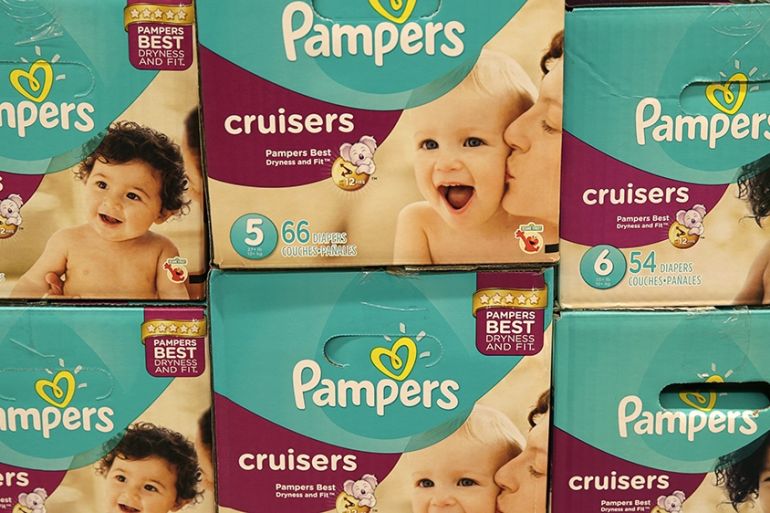Baby bust: Slowing birthrates hit P&G sales
Decelerating birthrates in the US and China hit diaper sales for consumer products giant and its competitors.

Procter & Gamble Co on Thursday posted quarterly sales that missed analysts’ expectations for the first time in five quarters, hurt by weakness in baby and feminine care products such as Pampers diapers and Tampax tampons.
A slowing global birthrate has hit P&G and competitors like Kimberly-Clark Corp, maker of Huggies diapers, particularly in China and the United States. To boost sales, both companies have invested in higher-priced premium products.
Keep reading
list of 3 itemsChina spends $29bn on pampering pets as its birthrate slows
Kids on pause: Why young people in Taiwan prefer pets
Premium baby-care sales in China are up 20 to 30 percent so there are still opportunities despite the slow birthrate, P&G Chief Operating Officer Jon Moeller said on a post-earnings call.
Sales growth in the US for diapers and baby care was about flat from a year ago, and innovation in the market remains competitive, Moeller said.
P&G said net sales rose 4.6 percent to $18.24bn, which missed the average analyst estimate of $18.37bn, according to International Brokers Estimate System data from Refinitiv.
Jefferies analyst Kevin Grundy said Wall Street expectations were built on the company’s momentum in the past five quarters, but the modest second-quarter results are likely to be met with disappointment.
“Good quarter, but high bar,” he wrote in a note to clients.
In 2018, P&G launched the Pampers Pure line of plant-based diapers made with zero chlorine bleaching, fragrance or parabens. It has recently teamed up with Google to make a smartphone app that alerts parents when a diaper needs changing. Similarly, Kimberly-Clark in July launched a premium Huggies brand, Special Delivery, made from plant-based materials including sugar cane.
Sales of P&G’s baby and feminine products rose just one percent to $4.58bn, while sales of fabric and home care products rose four percent to $5.79bn, both missing estimates.
The company said inventory levels in Japan fell following a build-up before the nation’s sales tax hike in October.
Sales at P&G’s grooming business, which makes Gillette razors, rose two percent to $1.65bn, also below estimates. The company took an $8bn charge last year related to the unit, which faces competition from smaller rivals Harry’s and Dollar Shave Club.
P&G has been investing heavily to develop new products across all categories, improve packaging and marketing as it tries to appeal to younger consumers and fight competition from Unilever, Reckitt Benckiser and local upstarts.
The company raised its fiscal 2020 forecast for core earnings per share growth to between 8 percent and 11 percent from a prior range of a rise of 5 percent to 10 percent.
Net earnings attributable to P&G rose 16.4 percent to $3.72bn in the quarter ended December 31. Excluding one-time items, profit of $1.42 per share beat the average estimate of $1.37.